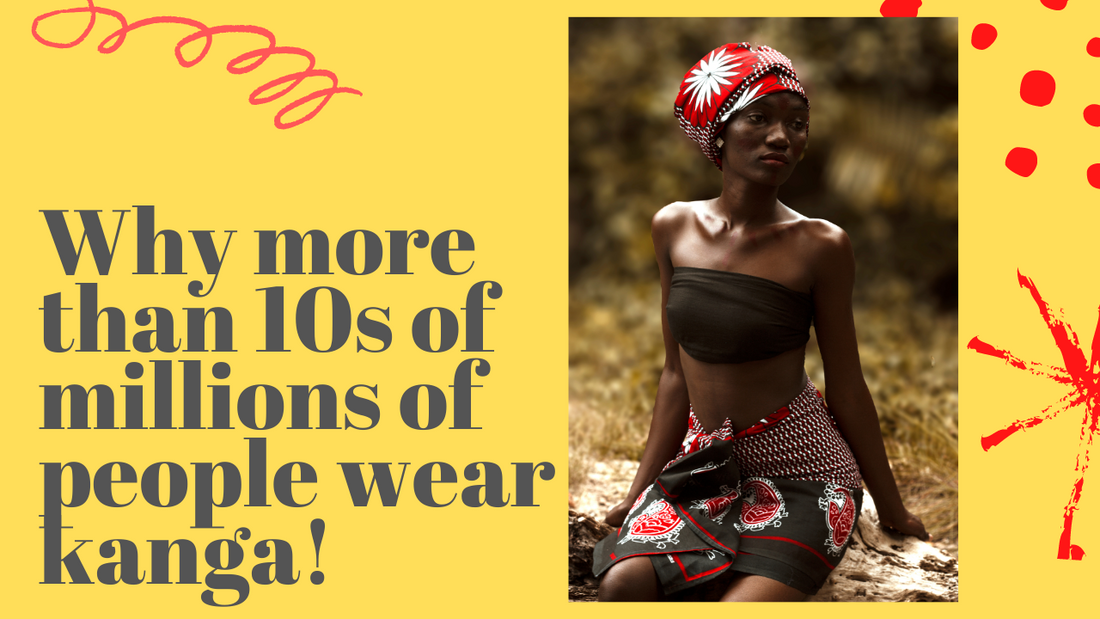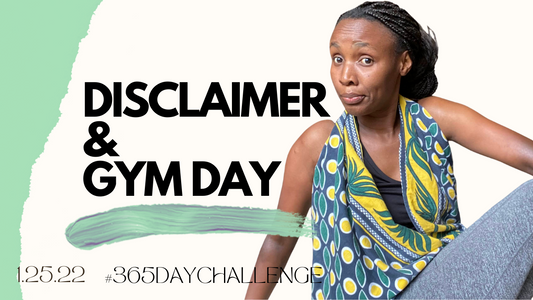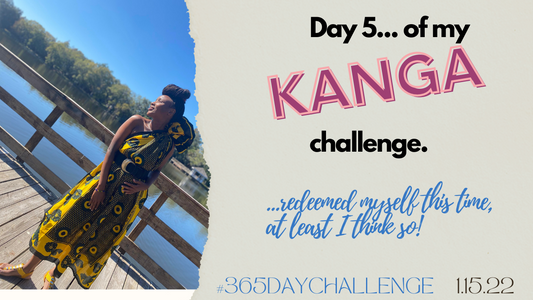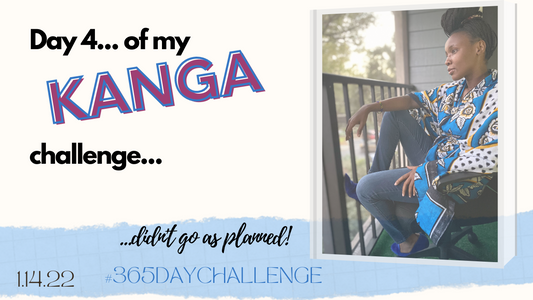"Kanga" pronounced [kang-gaa], also known as "leso" is a traditional piece of African print cloth that is widely used in East Africa. It is a Swahili word which is also used on a local bird, the Guinea Fowl.

Kanga usually comes as a pair, commonly referred to as “doti”. Which to me means double the fun!
A typical kanga has three main parts:

“Pindo” – which is the border surrounding the “Mji” – which is the center. And finally, one of the most important part of modern kanga, the saying or as it is said - “Msemo or “Ujumbe”. This part is what sells the khanga because it relays a message from the wearer to the world.
Kanga is usually made from 100% cotton fabric with each pair measuring approximately 66 by 43inches,
The pair is usually shipped uncut making the full length of the fabric to be 132x43inches.
Kanga as we know it today originated from the costal region of East Africa, which comprises of Kenya, Tanzania and Uganda as the main countries. It has and continues to be a crucial part of the everyday life for tens of millions of people, both men and women in those regions.
There is so much more that can be said about how the rectangular piece of kanga cloth came to be.
It is said to have been inspired from unbleached calico cloth traded from the US called Merikani that was used in pre-colonial times, combined with influences from the block printed and dyed indigo cloth from India called kaniki, and the well known Visutu or handkerchief like cloth that the Portuguese brought in the East African coast.
But the take away here is that what may have started as a plain piece of material, the East African people transformed it to a beautiful and meaningful piece of cultural heritage that we all love today.

Now let’s switch gears a little bit and talk about how you can use and care for you kanga.
Kangas come in so many sizes, colors, designs, and quality.

And its use is so vast I bet you too can come up with a clever way to wear kanga.
Growing up I have used kanga for personal care, meaning as a towel or cover, as a blanket, I have also used it in many of our traditional dances while in school. I wish I had pictures to share, but I do not…

I carried babies in them like these beautiful Maasai ladies, carried items on my head using kanga as a “kata” to protect my head.
Also when we go to funerals, we almost always wear kanga wrapped like this…

As for weddings! Well, there we gift kanga to the bride, mother of bride, aunties of the bride, and groom’s mother and so fort.

We also decorate with kanga, I mean the possibilities are endless here.
And nowadays, bridesmaid dresses are utilizing kanga and other African print as part of their main designs.
Because of the ease with which kanga can carry a message to the people, it is a staple in political rallies and commemorations of important events.
Now, modern day uses of kanga can be playful and fun.
You can turn your kanga into tank tops, crop tops, cute summer outfits or scarfs for the colder seasons. All of these can be done with or without sewing. Head wraps for many occasions, skirts both long and minis for other occasions, beach wear or dresses – I mean you just have to bring your imagination to life.

Heavier kangas have been made into different types of clothes for men and women, as well as larger items such as curtains, table cloths, bed sheets with pillowcases, and other decorative items, apart from being worn as is.
So as you can see, the possibilities are endless when it comes to kanga, and that is why I love and cherish each pair that I receive... And delight in each pair that I give!
Now, once you own your pair, the next question would likely be How do you take care of your kanga to preserve its quality and longevity?
Here is what I do with my kanga.

One, hand washing it or machine wash it with cold water and mild detergent.
Avoid like a plague harsh soap or chemicals that would discolor the fabric.
If you are lucky and have sunny weather then consider line drying your kanga or if you live in colder climate then tumble dry on lower heat.
This will help the longevity of your fabric and its vibrant colors.
And lastly, if your fabric creases then you can simply iron with moderate heat.
Well, that is a whole lot of information here...but the take away is that Kanga is a versatile piece of African fabric that is worth having!

Its easy to own your today... simply visit our store and our YouTube channel where you will get more information on how you too can wear your kanga even without sewing it!
~ Maua



